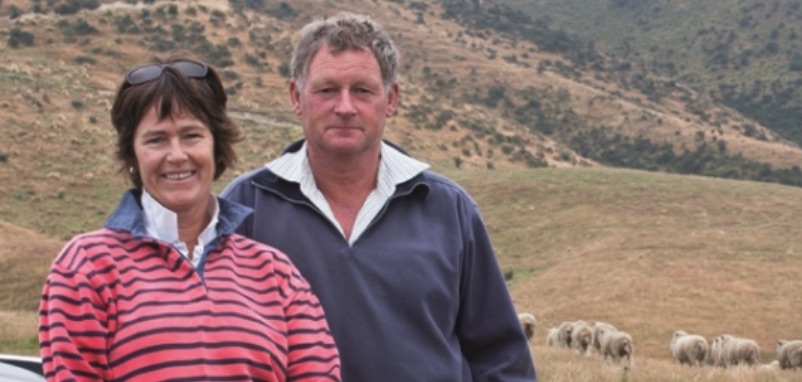Geoff and Janine’s porperty consists of 750ha low and 1,900ha high tussock country, and runs up to an altitude of 1,200m. They run 2,500 Corriedale ewes, 200 Angus cows and 250 red deer hinds (plus replacements). The decline in wool returns in recent years has led to a change of stock strategy, with the focus shifting to finishing rather than selling to store. With this strategy in mind, Geoff’s reduced breeding stock numbers so that he can take stock through and sell them at a time that suits him, rather than being at the mercy of climatic conditions. Hand-in-hand with this policy, he’s also working on increasing the number of lambs that hit the ground by using high-fertility Romney rams, with the aim of lifting his lambing percentage from 110%-130%. His hoggets scanning percentage has already shown a significant improvement, with a jump to 88%. Steer calves are kept until 18 months – although depending on the season they may be taken through longer.
Stock are supplemented with 15ha kale in the winter, and in the last three years Geoff has planted 52ha lucerne and 10ha lucerne/fescue mix (the acreage of which he intends to increase in the future).This is either conserved as silage or grazed off.
Geoff’s a long-time user (since the early 1980s), and keen advocate, of Hatuma Dicalcic Phosphate. “When we first used dicalcic we were on a 4,000 acre hill country farm out the back of Taihape that had never had fert on it. We used dicalcic with amazing results. The improvement in stock health was huge. They were grazing big, steep faces which were sour and we could never get them to eat anything. But once we put dicalcic on, the lime must have sweetened it and the stock would eat it. The pasture looked a lot better because it got eaten, and brown top and the poorer pasture species decreased.”
“When we first came south dicalcic wasn’t available here, so we used a bit of superphosphate when we could afford it, and a bit of lime, but now it’s down here we’ve started using it again.”
Geoff uses Hatuma DP #8 (with extra Durasul sulphur), which is applied at rates of 300-400kg/ha annually – by truck on the lower country and flown onto the steeper country. He also uses a Hatuma product on his lucerne (Hatuma DP Lucerne). It gets two applications a year, after which it’s cut for conservation or grazed off.
The local Hatuma field representative, Geoff Booth, rates Geoff’s skills as a farmer. “Geoff is on a big station which he’s rebuilding and has a good insight into where fertiliser sits in his farming model. He’s used Hatuma Dicalcic extensively in the past, and it’s one of the few fertilisers he’s seen noticeable results from. Although he’s only been using it down here for a year, he’s happy with the results.”
As Geoff says, “Other than for cropping, we’re going to stick with dicalcic. When we were up north, dicalcic was the only fertiliser where we could see a marked improvement in our stock, as well as the country.”

